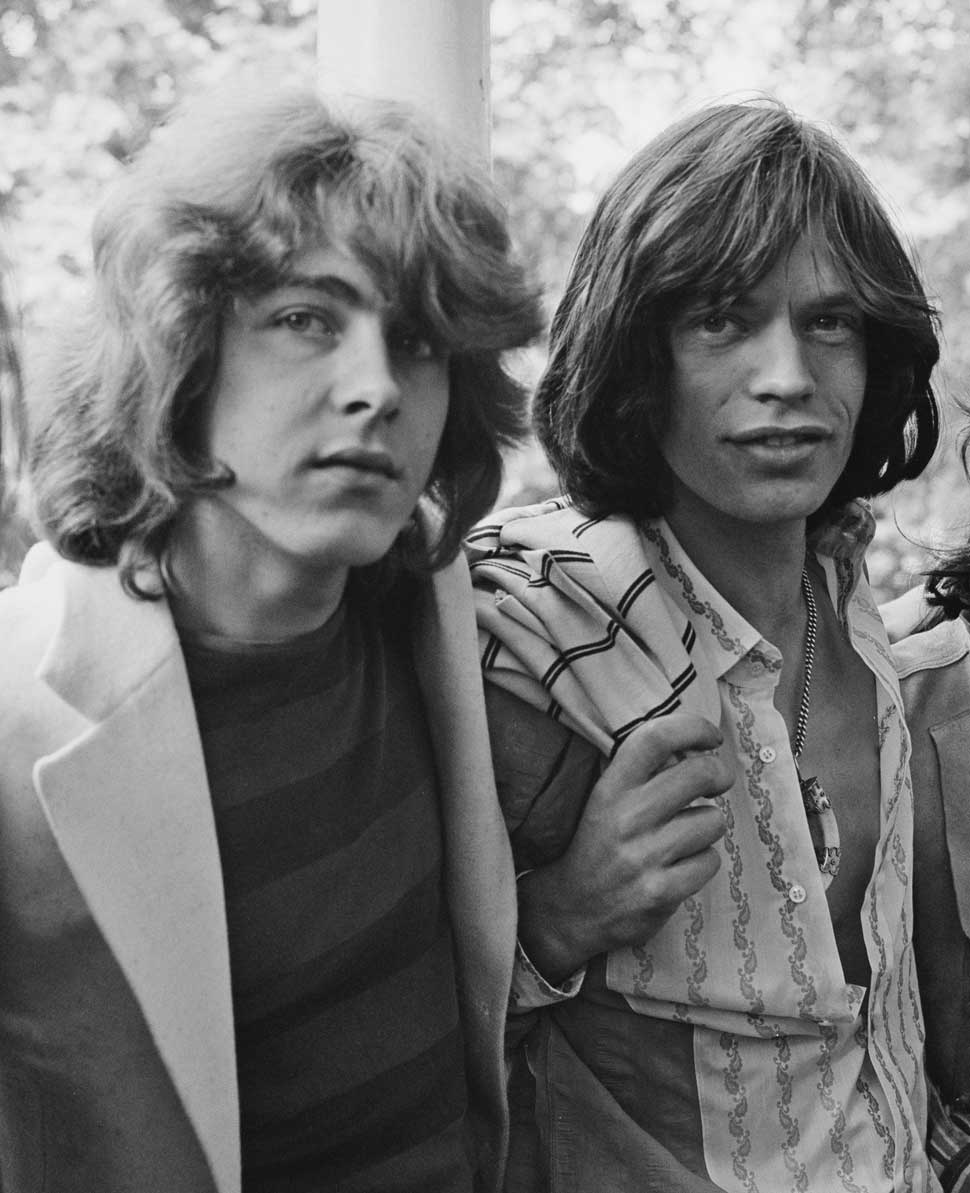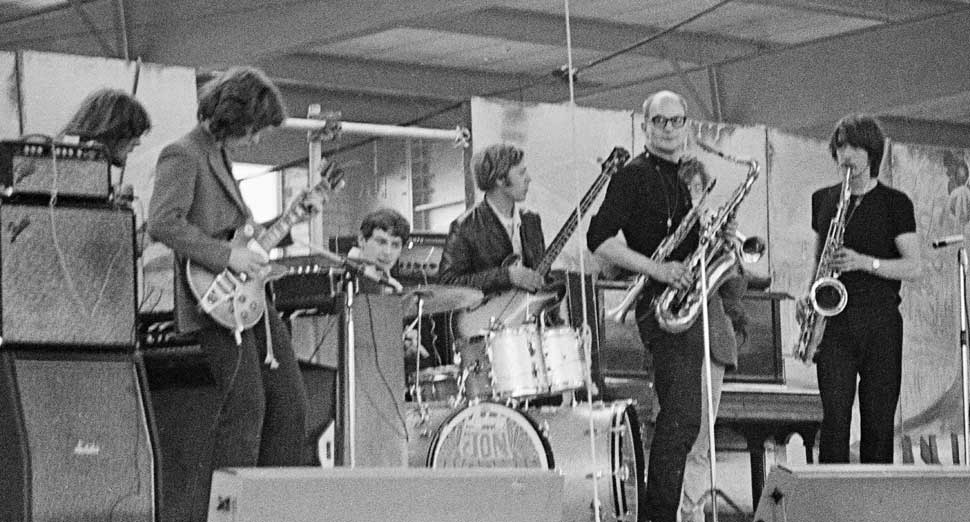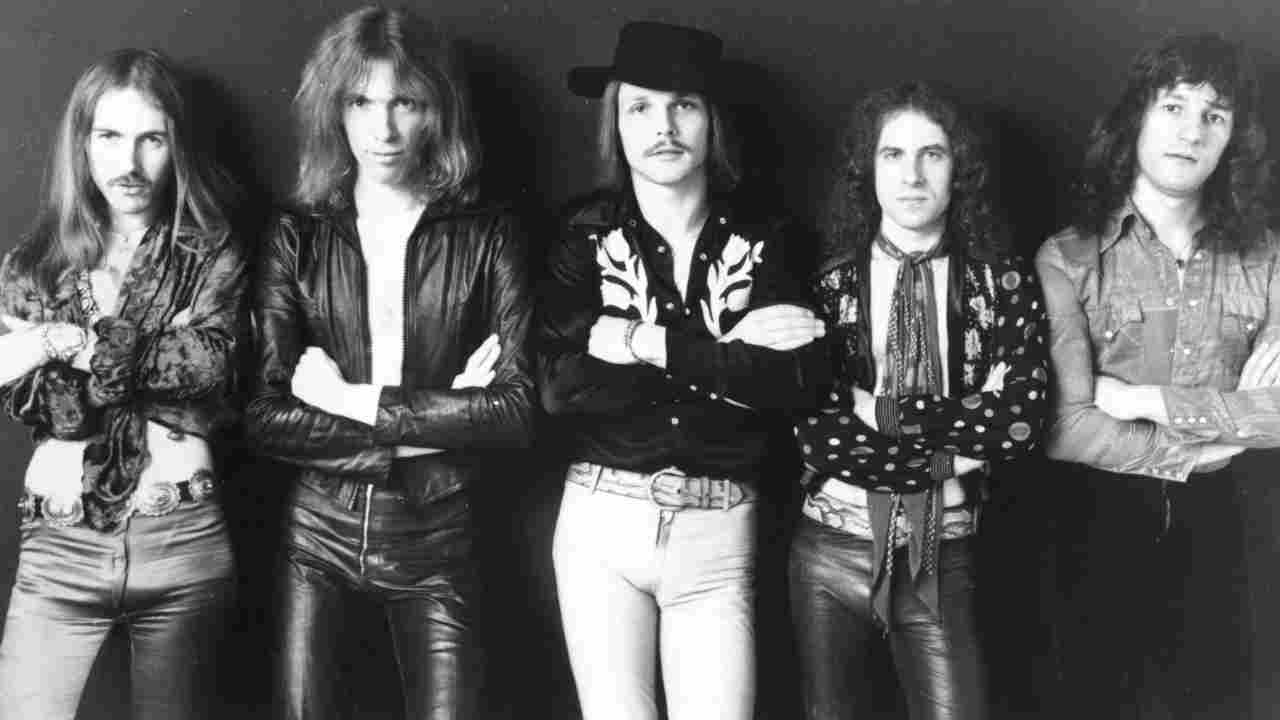"There wasn't too much talking about who should play what, it was a very instinctive kind of relationship": Mick Taylor on life in the Rolling Stones, Altamont and leaving the band
The Rolling Stones’ secret weapon throughout their golden period looks back on his time with the band

One of the more endearing moments of 2010's Classic Rock Awards came when Exile On Main Street won Reissue Of The Year. Enter Rolling Stones guitarist Ronnie Wood to accept. Never mind that Wood never actually riffed on the band's original 1972 masterwork.
"I've played these songs for the last 30 years and it's about time that I collected something," he said. "So thanks a lot!"
Mick Taylor, the man who actually did play on Exile, has always remained an elusive figure: The Man Who Dared Leave The Rolling Stones, an effrontery which prompted Keith Richards, similarly appalled by Bill Wyman’s departure years later, to state that “no one should leave this band except in a pine box”.
Quite why he left in December 1974 has also been subject to conjecture. Taylor has calibrated his answers in subtly different ways down the years. There were rumours of fights, arguments over alleged songwriting credits, marriage problems, road-weariness, drugs (chiefly a burgeoning heroin addiction) and even plain old boredom. Perhaps it was all down to simple chemistry. As proficient a guitarist as Taylor was, he was never an out-and-out rock’n’roller, much less a showman.
Ronnie Wood, who replaced him in March 1975 (though it wouldn’t be made official until the following year), suited the Stones’ lad-jack image much better. But few would contend Wood was in the same league as a guitarist. Drummer Charlie Watts had admitted that “the Mick Taylor period was a creative peak for us. A tremendous jump in musical credibility.”
Mick Jagger stopped just short of an enormous self-made hole when telling Rolling Stone about Taylor in 1995: “He was a very fluent, melodic player, which we never had, and we don’t have now… Some people think that’s the best version of the band that existed.” Asked if he agreed with those people, Jagger replied: “I obviously can’t say if I think Mick Taylor was the best, because it sort of trashes the period the band is in now.”
It’s in Life, Keith’s recent autobiography, where the double strands of the Taylor effect are most tellingly articulated, if a little sourly. Richards admits he was sometimes in awe of Taylor’s playing - “the melodic touch, a beautiful sustain and a way of reading a song” - but also calls him shy to the point of being “very distant”.
Sign up below to get the latest from Classic Rock, plus exclusive special offers, direct to your inbox!
There’s a distinct tang of bitterness when Richards claims his departure “left us in the lurch”, more so when he delights that, post-Stones, Taylor “didn’t do anything”. Which just isn’t true. Taylor teamed up with Jack Bruce, toured and played with Bob Dylan and other notables like Alvin Lee, Little Feat and the Grateful Dead, made solo records and even reunited with mentor John Mayall in the Bluesbreakers.

But you can see Keith’s point. Pine box or not, there’s no getting away from the Stones. I was earmarked to accompany Taylor to the Classic Rock bash at the Roundhouse, the idea being for him and Ronnie to collect the award together. Old chums reunited and all that. But some tricksy dental surgery had apparently left him with a badly swollen face and no voice, forcing him to stay home.
Perhaps fitting, some might venture, for a man often regarded in hindsight as the enigma that even the Stones couldn’t crack. That said, the Mick Taylor who answered the phone to Classic Rock a few days earlier is talkative, if guarded. What does he recall of those heady days in the South of France in 1971, recording Exile On Main St at Nellcôte, Keith’s waterfront pile? It may have been all coke, cognac and Cote d’Azur upstairs, but what about down in the basement, where all the work was done?
“It was a dingy little basement, quite damp,” says Taylor. “It wasn’t a proper recording studio at all. We ran all these cables down into the basement, which was divided up into small rooms. And there was only one room which we could all fit into and where we could play together. There was a place where Charlie played the drums, but it was in a separate section of the room. For vocal overdubs, Mick had to do them in a tiny room along the corridor. It was like a labyrinth, really.”
Did the atmosphere in the basement seep into the sound itself – songs like Shine A Light, Rip This Joint, Rocks Off and Taylor’s only official Stones co-write, Ventilator Blues?
“I think it did. It was a bit rough ’n’ ready. There were none of the refinements of Basing Street or Olympic Studios, but there was a sort of intimacy and closeness about playing together then, even though sometimes it used to drive us insane. I mean, we were there for a long time. It’s a very bluesy, earthy kind of record. The Stones never made another album that way. Ventilator Blues was a song that, to be honest, I didn’t expect to get any credit for. I probably had a lot more input on one or two of the other songs.”
The Stones had initially decamped to France as tax exiles. And while Jagger settled in Paris with new bride Bianca, the others found places in the hills surrounding Nellcôte.
“We’d usually start recording in the evening and go on all night,” Taylor remembers. “I’d emerge into the driveway and be blinded by sunlight. Then I’d drive home with my first wife, Rose, to our little house up in the hills near Grasse, where Bill Wyman had actually bought a house. We had Tolstoy’s old writing desk. Madame Tolstoy would occasionally come down from Paris to check up on us. It really was idyllic, but I spent a great deal of time at Nellcôte. We brought a lot of London with us. There were friends and family coming over all the time. Everybody descended on Keith’s house and treated it like a holiday camp. I’m sure for people who weren’t involved in making the record it was a 24-hour party.”
Taylor’s memory of Nellcôte’s revolving cast of celebrity boarders is a little fuzzy. “There were a lot of people who came to visit that I don’t remember, for whatever reason. I don’t remember John Lennon and Yoko coming, but apparently they did. I do remember Gram Parsons though. He and Keith got on very well. I’d met Gram Parsons in 1969, when he was with the Flying Burritos, but knew him originally from when I’d been playing in Los Angeles with John Mayall in 67 or 68.”
John Mayall’s Bluesbreakers had been Taylor’s first professional calling in 1966, when the 17-year-old replaced the Fleetwood Mac-bound Peter Green. Taylor developed into a formidable guitarist under Mayall’s tutelage.

“It was quite a nerve-wracking experience when I was really young, following in the footsteps of Eric Clapton and Peter Green, but after a month or two I fitted in really well. It was basically all down to John Mayall’s stewardship and everything I learned from him about the blues. Travelling around with him in America made me become a good blues player and I developed my own style. We were playing in lots of iconic places like Winterland [in San Francisco] and the Fillmore East and West. One night at Winterland, Jimi Hendrix was top of the bill, John Mayall and myself and the Bluesbreakers opened the show, and Albert King was in the middle. It was incredible, especially when you consider the fact I was only about 18 years old.”
In June 69, Mick Jagger was casting for a replacement for Brian Jones, and asked Mayall for advice. Mayall recommended Taylor. “Live With Me was the very first track I ever played on,” Taylor recalls, “when they were putting the finishing touches to Let It Bleed. We actually recorded that the night I went for my audition at Olympic Studios, or maybe the night after.
"Then I overdubbed guitar on Honky Tonk Women. But Live With Me was special, because it was the first Stones song I ever played on. I remember [producer] Jimmy Miller jumping up and down in the control room and getting all excited about how good it sounded, having two guitars playing off each other. Because I think they’d missed that with Brian Jones in the two-year hiatus since their last live performance. The Stones actually hadn’t played together for a long time, so when I joined them it was like a new beginning. It was a new phase in their career, a new chapter.
“They were very creative days with the Stones. And then there was the twin-guitar thing, with me and Keith not playing strictly lead or rhythm, but floating around each other. There wasn’t too much talking about who should play what, it was a very instinctive kind of relationship.”
And what of the personal relationship between Richards and Taylor? It’s something he considers slowly, especially when discussing Exile On Main St, his words as deliberate as if he were picking out an untried solo: “Keith wasn’t at his most communicative then [pause]. He wasn’t as outgoing. I’m choosing my words carefully here. But instinctively, yeah, we got on.”
If anything, Taylor’s fondest Stones memories are reserved for Sticky Fingers, the album they made in London (and, for a few days, in Muscle Shoals, Alabama) the previous year. “Unlike Exile On Main St, we didn’t labour over it day and night, month after month. Most of it was done in the studio, though some of it was done at Jagger’s house, Stargroves in Berkshire.” It’s generally acknowledged that Taylor’s creative input came to bear on two Sticky Fingers songs – Sway and Moonlight Mile. Again, he chooses his words prudently.
“I had an influence on them. I mean, would Sway have existed without my contribution? Probably, but not the way it does. And the same goes for Moonlight Mile. I remember Mick writing that one in a train carriage on the way from Paddington to Bath. Touring in those days, even with the Stones, was often like that. We didn’t have private planes or trains.
"I remember it vividly. He started playing the song on acoustic guitar. Sway was done very quickly. Mick actually played rhythm guitar on that; Keith wasn’t even around when we did that. I don’t think Keith is on Moonlight Mile either. I started playing the solo in an open tuning, which is why it sounds off the wall. And Paul Buckmaster did the string arrangement based on the riff I came up with.”
Taylor says he’d followed the Stones’ career with interest before becoming part of the setup. He was still at school in Hatfield when they hit big in the early 60s – he was born five years after youngest Stone Keith – though he’s admitted his sister was much more of a fan. After he joined, she would constantly remind him of the time she put Little Red Rooster on the home turntable, only for Taylor to rebuke her with: “Turn that rubbish off and put Revolver on.”
Today he considers the extra dimension he brought to the band: “It’s interesting because a lot of the songs they did before Beggars Banquet were singles geared more towards pop – things like Ruby Tuesday or Let’s Spend The Night Together. But really, the Stones had always been a blues band. So in one sense, I was on very familiar ground, but in another way it was a real departure for me. Once I’d joined and we’d recorded Let It Bleed and Get Yer Ya-Ya’s Out, I was a part of the band. Being an improviser, I noticed there would always be a space for a guitar solo, which had not always been the case on Stones records.”
But there was more required of a Stone than mere musicianship. You needed a strong backbone to survive life on the road with the world’s biggest band. If Taylor’s Hyde Park baptism wasn’t testing enough, five months later came Altamont. The disastrous free concert near San Francisco was marred by violent clashes between Hells Angels and the crowd, ending in the horrific murder of Meredith Hunter, captured on film by the Maysles brothers in Gimme Shelter.
“Altamont all happened so quickly,” recalls Taylor. “It was very surreal, a nightmare actually. The whole idea of doing a show at Altamont Speedway was an afterthought. We’d finished the tour and were at Muscle Shoals in Alabama, recording Wild Horses and Brown Sugar.
"I’ve never been able to discover why we actually did that show. We didn’t have any hands-on input into the organisation of it; it was all done based on trust. It didn’t feel right from the moment I arrived there. Some guy jumped out and threw a punch at Mick Jagger. It was chaos. And the fact that it was policed by the Hells Angels didn’t help. They took the law into their own hands and started throwing people off the stage. It was a relief to get out, but that was terrifying too. People wanted to get away so badly there were too many on the helicopter.”
Then there was the recreational side of being a Stone, including the band’s much-publicised drug use. Did that hamper things somehow? “I don’t know, maybe it even helped in some ways. It’s a strange thing to say, but it was just a part of so many people’s lives who used to hang out with the Stones, even from the early days. It wasn’t something I ever felt was unique to them though. It was part and parcel of the recreational drug-cultural view of life. I’m not saying it wasn’t dangerous, but it didn’t have the sinister, nasty qualities that are associated with it these days.
"We were all a lot younger then and you’d try different things. Some people ended up falling by the wayside, some people would try things once or twice and others simply faded away. But I don’t blame the Rolling Stones for my own personal problems.”
Everyone seems to have a theory as to why Mick Taylor quit the Stones. Late producer Jimmy Miller – the man behind that imperious run of albums that began with Beggars Banquet – once posited that the guitarist was somehow stifled by the band, “as they wanted him to fill that necessary part of the Stones. He added a dimension that Keith wasn’t comfortable with… I think Keith had a different vision than Taylor and wanted to protect his songs.”
When I bring up the subject of his departure, the first note of weariness creeps into Taylor’s voice: “Yeah, I could write a book about that. From the moment I joined John Mayall, right up until 1974, I’d been working all the time. I was completely used to either being in the studio or being on the road. If it wasn’t with the Stones, it was with somebody else. I just needed a break.”
So there you have it, for today at least. Taylor insists his time with the Stones was a great experience, with Exile On Main St particularly fresh in the mind. For 2010’s deluxe reissue, he added a new guitar part to one of the bonus songs, Plundered My Soul.
“Mick had to construct a vocal line,” he explains, “which I played to once it was done. It was very sparse and unfinished, but in the end I think it fits. More importantly for me, it was great fun to see Mick again, to be in the studio, playing guitar with him singing. It felt very comfortable and familiar. In a musical sense, it was almost like I’d never left the Stones.”
This feature was published in Classic Rock issue 153, published in January 2011.
Freelance writer for Classic Rock since 2008, and sister title Prog since its inception in 2009. Regular contributor to Uncut magazine for over 20 years. Other clients include Word magazine, Record Collector, The Guardian, Sunday Times, The Telegraph and When Saturday Comes. Alongside Marc Riley, co-presenter of long-running A-Z Of David Bowie podcast. Also appears twice a week on Riley’s BBC6 radio show, rifling through old copies of the NME and Melody Maker in the Parallel Universe slot. Designed Aston Villa’s kit during a previous life as a sportswear designer. Geezer Butler told him he loved the all-black away strip.




